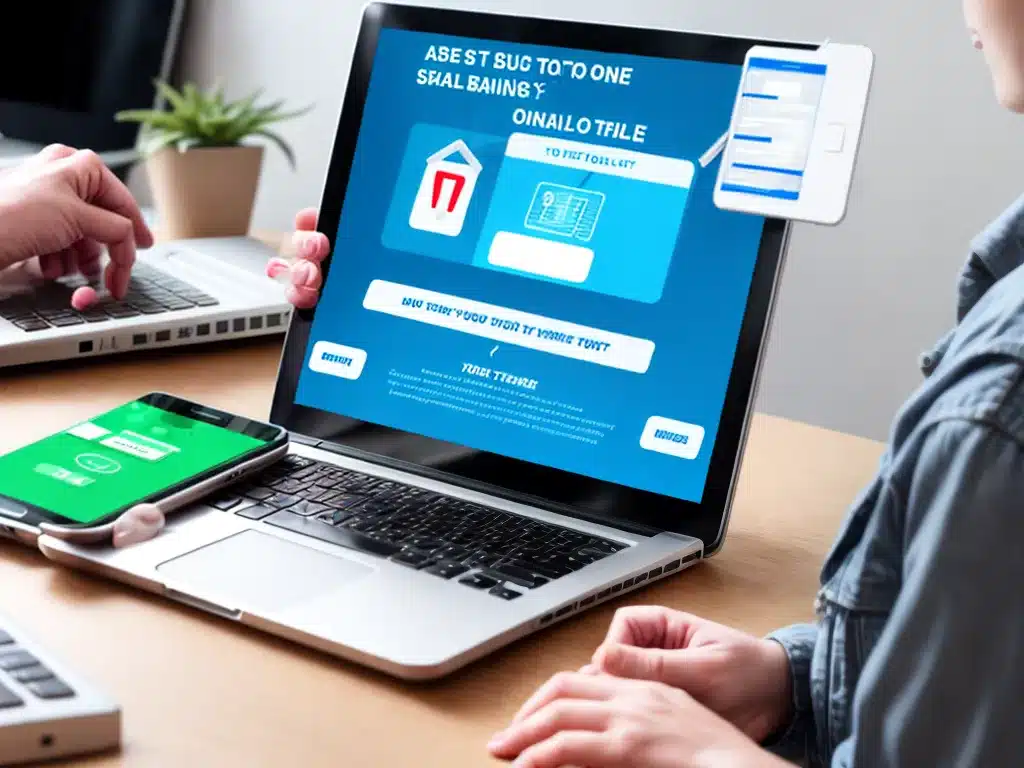
How to Do Online Banking Safely in 2024
Online banking has become an essential part of modern life, allowing us to manage our finances conveniently from anywhere. However, as digital transactions increase, so do the risks associated with online banking. Fortunately, with some simple precautions, you can bank online safely. Here is an in-depth guide on how to do online banking securely in 2024.
Set Strong Passwords
The first step is using strong passwords and changing them frequently. Weak passwords are easy for hackers to guess and a common way accounts get compromised.
To set a strong password:
-
Use at least 12 characters, combining upper and lower case letters, numbers, and symbols. The longer the password, the better.
-
Avoid dictionary words, names, dates or other personal info that could be easily guessed.
-
Do not reuse passwords across different accounts. Use unique passwords for every login.
-
Change passwords every 90 days. Set calendar reminders to prompt yourself.
-
Use randomly generated passwords from a password manager rather than creating your own.
-
Enable two-factor authentication (2FA) for an extra layer of security.
Be Wary of Public Wi-Fi
Public Wi-Fi networks at coffee shops, hotels, airports etc. are often not secure. Hackers can intercept login details and other sensitive information over unsecured networks.
-
Avoid accessing any financial accounts through public Wi-Fi. Wait until you are on a password-protected home or work network.
-
If you need to log in while out, use your phone’s cellular data instead of Wi-Fi. Or use a virtual private network (VPN) app to encrypt your connection.
-
Never auto-connect to open networks and disable Wi-Fi auto-connect in your settings when not in use. Manually select networks when needed.
Keep Software Updated
Out-of-date software and apps often have vulnerabilities that hackers can exploit to infiltrate devices and steal data.
-
Enable automatic updates on your computer and phone operating systems to stay current.
-
Update banking and other finance apps regularly.
-
Remove unused programs and apps that are no longer supported with updates. The fewer programs on your device, the smaller the attack surface.
Use Antivirus and Firewall Software
Antivirus software helps detect and block malware including spyware, bots, and trojan horses which cybercriminals use to steal login info or encrypt files for ransom. Firewalls provide an additional shield against unauthorized access.
-
Use reputable antivirus software like Avast, AVG, Malwarebytes, McAfee etc. and keep virus definitions updated.
-
Enable your computer’s built-in firewall and adjust settings to suit your needs.
-
Invest in a robust internet security suite that includes a firewall, antivirus, anti-spyware, phishing protection, and more in one bundle.
Beware of Phishing Scams
Phishing uses fraudulent emails, texts, calls and websites posing as legitimate companies to trick users into revealing sensitive data. They often urge you to act immediately or your account will be closed.
Red flags of phishing:
-
Generic greetings like “Dear customer” instead of your name.
-
Suspicious sender address instead of official company domain.
-
Links to fake login pages to steal your username and password.
-
Spelling and grammatical errors.
-
Requests for personal information like SSN, bank account or login credentials.
-
Threats of account deactivation unless immediate action is taken.
Delete any suspicious messages immediately. If concerned, contact the company directly through their official website or helpline number. Never click links or provide information to an unsolicited message.
Monitor Accounts and Statements
Routinely monitoring account activity helps identify unauthorized transactions early before extensive damage occurs.
-
Review account balances and transaction histories frequently, at least weekly.
-
Carefully scrutinize monthly statements and report unknown activity.
-
Set up account alerts via text or email for certain transaction types like withdrawals over a limit.
-
Know typical charges so irregular ones stand out. Watch for small test charges which criminals use to validate stolen cards.
If caught early, unauthorized transactions can be reversed and fraudulent accounts shut down.
Secure Devices
In addition to using robust passwords, further lock down devices used for banking:
-
Enable remote wipe in case your phone is lost or stolen. This protects data in the event of device theft.
-
Encrypt your hard drive using BitLocker (Windows) or FileVault (Mac). Encrypted data is unreadable without a password.
-
Never save banking login credentials on browsers or devices. Always re-enter details each session.
-
Install security updates as soon as available. Turn on automatic updates if possible.
-
Use a credit card for purchases rather than a debit card. Credit cards have better fraud protection.
-
Beware of shoulder surfing. Use hand or body to shield devices when entering passwords in public.
Online banking is safe as long as proper precautions are taken. Following these tips will help secure your accounts from the majority of threats in 2024 and beyond. Be vigilant, think twice before acting, and use cyber sense for stress-free banking!












